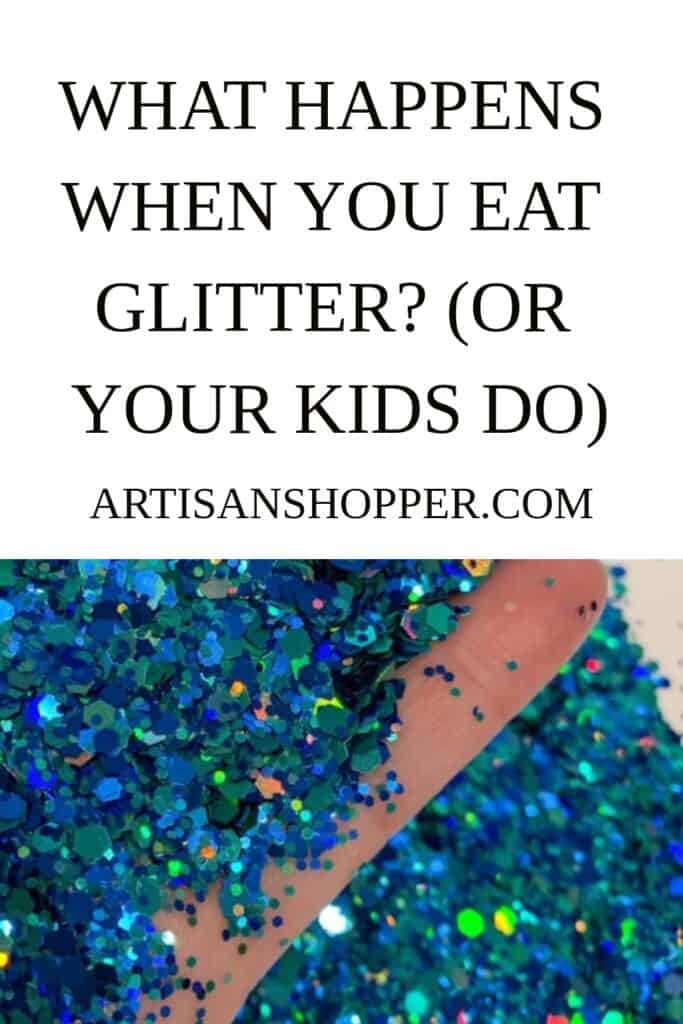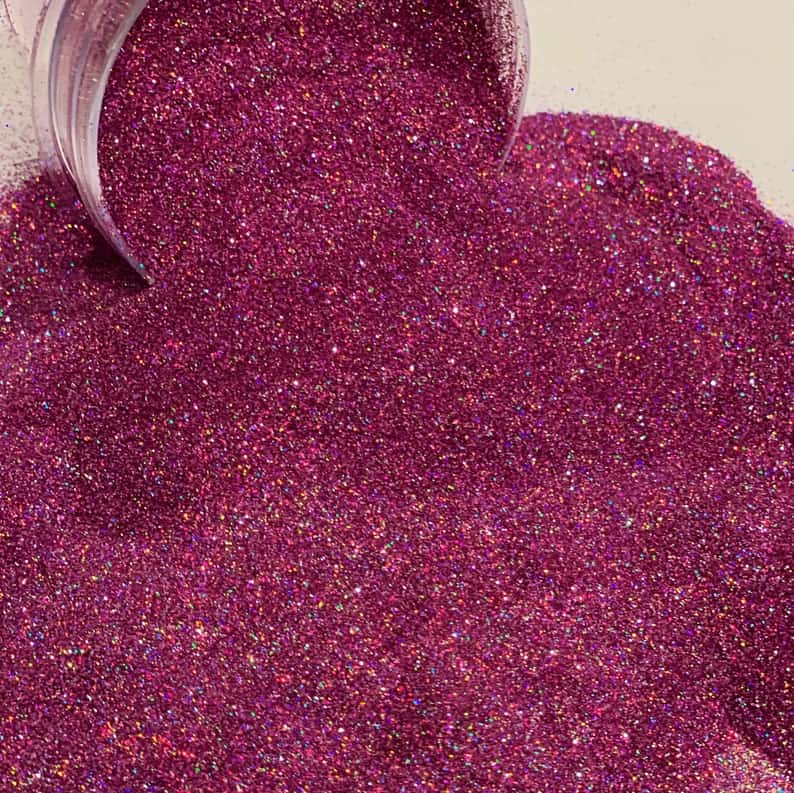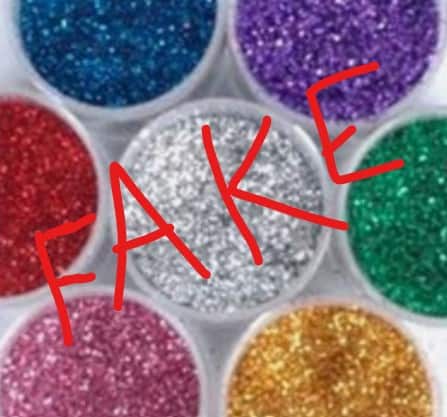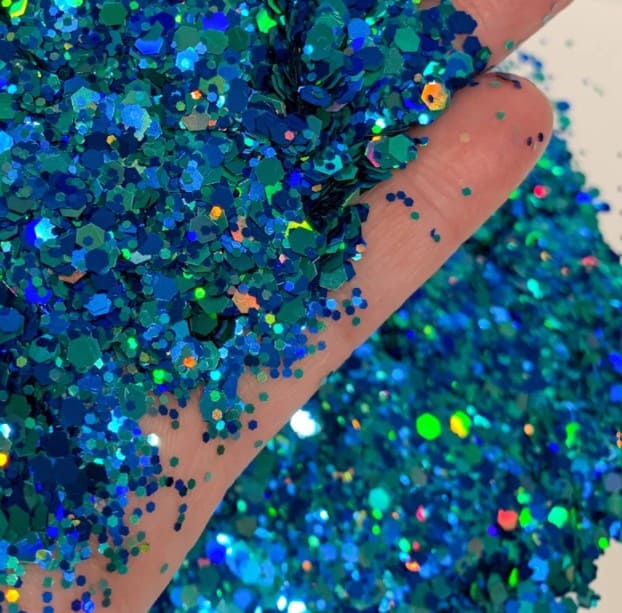When people started eating food that had glitter on it, it became a real debate in the cake decorating world. Should you put glitter on cakes or cupcakes? What about “edible” glitter? Is it really food?
It turns out that the kind of glitter that was showing up all over social media in lattes and on cupcakes was NOT food, it was micro-glitter that’s basically finely ground-up plastic.
So what happened to all the people who were drinking those sparkly drinks and eating those sparkly cakes?
As a general rule, plastic glitter will pass through the digestive system of a healthy person without causing any harm. Most glitters are made from some form of plastic that will not be digested when eaten. So while it’s not technically a food item, small amounts of glitter can usually be safely consumed if it’s labeled non-toxic. However, if someone has an underlying health issue that could be exacerbated by consuming small particles, it should be avoided unless it’s genuinely edible.
In addition, if the glitter is made from glass, it DEFINITELY should NOT be eaten in any form!
There is a difference between “non-toxic” and “edible,” and that’s an important distinction when you’re talking about glitter.
Read on for an explanation of those differences, and how to tell what type of glitter you’re dealing with the next time you go to decorate a cake or cupcakes.

Table of Contents
- Is glitter toxic?
- What is edible glitter made of?
- What should you do if you eat glitter by accident?
Please note: Some of the links on this page are affiliate links, which will give me a small commission at no cost to you if you buy something when you use them.
Is glitter toxic?
Plastic craft glitter is generally labeled non-toxic, which means that it won’t poison you if you eat it. While this may be comforting if you happen to swallow a little glitter by accident, it’s not a good idea to eat non-toxic glitter on purpose. It shouldn’t be used to decorate cakes or other types of food unless it’s attached to decorative elements that can be safely removed before serving.
Glitter that’s labeled non-toxic is not meant to be used for food use. If something is labeled edible it means that it has been made from FDA-approved ingredients and is actually safe to be digested.
While non-toxic glitter isn’t poisonous, it’s still not considered edible, and it’s not recommended that people consume it.

I asked Lisa, the owner of Tipsy Glitz, what you should do if you eat glitter. Her shop is full of all types and sizes of glitter, so she’s the expert.
She said “Most glitters are non-toxic and won’t kill you, but it’s not suggested to eat unless it’s marked as edible, which will have certain ingredients listed.”
When the glitter food craze had reached its peak, the FDA decided to take it down a notch and issued a warning to food handlers to stop using non-toxic glitter on food.
to food handlers to stop using non-toxic glitter on food.
I thought that was reasonable, because I was making custom wedding cakes then, and I saw a LOT of bakers using a LOT of glitter on cakes.
After that warning, people started looking into using glitter that was actually edible, and a bunch of recipes started popping up.
Some looked better than others, but no edible glitter ever has the same shine that plastic glitter does.
When you see super-shiny glitter on food, chances are that it’s not really edible, and you should avoid it if you can.
Remember that photo of pots of super-sparkly glitter that was making the rounds along with a recipe?
Sorry, that wasn’t edible, it was just a photo of real glitter. Don’t know what I mean? Here it is:

What is edible glitter made of?
Edible glitter is generally made from some type of edible base material, often a gum, gelatin, or starch, plus an edible sparkle dust to give it shine and color. To be completely edible the shine ingredient also needs to be edible, so it should be an FDA-approved luster dust. Many luster dusts that are used to add a shine to cake decorations are not edible, they’re non-toxic, and some are rated for decorative use only because they contain metals like copper. Those types of luster dusts shouldn’t be used to make edible glitter.
There are a few ways to make edible glitter, and most involve creating a sheet of shiny edible starch or gum, then grinding it up into smaller pieces.
I wrote an article about how to make edible glitter way back in 2012, and it also has a video showing the difference between a few types of edible glitters and non-toxic glitters. Click here to read that.
If a glitter is labeled “edible,” it should also have a list of ingredients on it to verify that it is actually a food product.
Glitter that’s non-toxic won’t have an ingredient list because it won’t have gone through the approval process with the FDA as a food product.
To see the full Artisan Shopping Directory sections, including signups for discounts, click here.

What should you do if you eat glitter by accident?
If you eat plastic glitter it’s unlikely to be harmful, and it should pass through your system without any problems. However, it’s a good idea to drink more water than usual to help the glitter pass through. If you have glitter that you can see in your mouth or on your teeth, rinse it out and avoid eating more glitter than you already have. If the glitter is made from glass, you should go to the emergency room immediately.
As far as kids eating glitter, it’s going to happen at some point.
I asked Lisa about that, too, and she said “If a child eats a small amount I don’t think there is a worry. Get them drinking plenty of water to help them pass it in their poop. I would say if it’s a large amount to call poison control and get advice.”
Food isn’t the only thing that they try to sneak glitter into, either, there’s also makeup to consider.
If you have some type of lipstick or lip gloss that has glitter in it, you’ll probably be eating some glitter when you wear it.
Try to avoid this kind of makeup, because even though it’s really sparkly and cute, it’s better to avoid it.
In general, try to avoid eating anything that’s labeled non-toxic and you’ll be better off. Save the glitter for your craft projects and not your baked goods and it will be fine.
